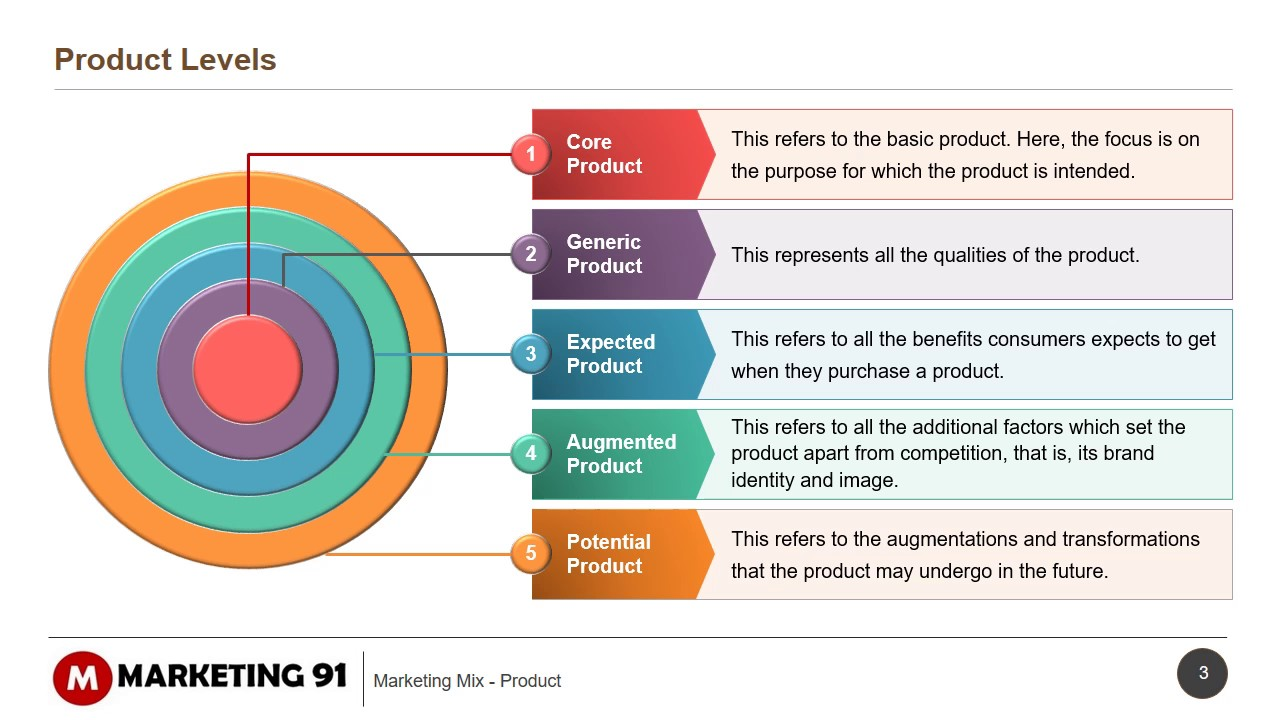It is essential that all organisations develop products. Product development and innovation are the ‘life blood’ of any business. Development and Innovation are strategic activities that shape the future. The creation of an acceptable product offering involves many strategic decisions.
Kotler et al. (1999) defines a product as having three levels. Firstly, a core product defines the fundamental need being meet. Fundamental needs are generic in nature (e.g. transportation, data storage or self-esteem).
Secondly, the actual product is the specific offering aimed at meeting a core need. This includes attributes such as styling, branding, performance features, and packaging. Finally, the augmented product, which enhances the actual product by offering added services and benefits, making the product a more attractive proposition to the consumer. Examples are after-sales support, maintenance and affordable finance.
Fundamentally, a product delivers a set of benefits to a customer to meet a need. Organisations must strive to fully understand this process and be certain their product offering best matches not only need, but also customer expectation.
Product Development Strategy
There is much debate relating to product development strategies. For example, how is the term ‘new product’ defined? The reality is that few products are ‘new’ in the sense of being innovative, unique, or novel. Most ‘new’ products are updates and revamps of existing goods and services. Jain (1997) views new products’ strategy in terms of three categories.
Product improvement/modification: Unless products are replaced by completely new entities, they must be upgraded/enhanced as a matter of necessity. The process can have two aims: (i) maintaining the competitive position in an existing market and/or (ii) adapting the product to appeal to other market segments. Major changes may result in the need to reposition product offering within a given at ensuring the products still are up-to-date.
Product imitation: This strategy involves capitalising on the initiatives of others and suits organisations that are risk-averse and/or have limited funds to invest. Clearly, there are potential ethical and legal problems with this choice, and organisations must define the line between imitation and copying. The strategy is most effective when the ‘new’ version of the product brings some added dimension of benefit.
Product innovation: This involves bringing new and novel ideas to the market place. Product innovation may be aimed at:
- Replacing existing products with novel approaches and items which enhance customer satisfaction or
- Providing diversification in order to target opportunities in new markets.
- Clearly, organisations should expect a correlation between risk and diversification.
Product Levels:

Managing Innovation
Organisations cannot remain focused on the past. The static organisation that believes the ‘old ways are the best’ will struggle. Innovation means change. Such changes are not normally single events but are complex combinations of actions and functional activity. Note, innovation and invention are not the same, as innovation is concerned with the commercial application of ideas.
Senior management should address the issue of innovation and create a culture and infrastructure to support the process. Organisations that continue to learn and effectively translate this learning into product offerings are the ones who will prosper. Innovation creates the environment for successful product development, improvement, modification, imitation.